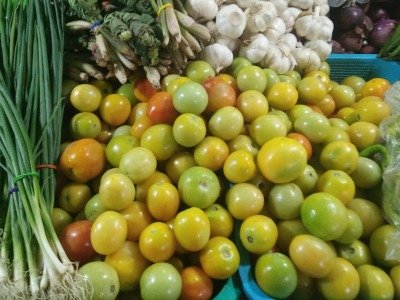What is horticulture?
This is a common question that confronts both students and workers in plant agriculture.
Indeed, it is important to be able to distinguish between the two main divisions of crop production, horticulture, and agronomy, in order to acquire a better theoretical understanding and skills in either specialized field.
The proper delineation of the two divisions will likewise facilitate efforts in research and development directed at certain groups of plants.

However, it is quite impossible to give an exact definition of horticulture.
Neither is it easy to enumerate its scope with definiteness.
Nonetheless, substantial enlightenment on the concept, scope, and definition of horticulture can be obtained from the writing of various authorities in the field.
According to Liberty Hyde Bailey (1858-1954), an American scholar who can be considered one of the Fathers of Horticultural Science along with Thomas Andrew Knight (1759-1838) and John Lindley (1799-1865) (Janick 2002), horticulture is the growing of flowers, fruits and vegetables, and of plants for ornament and fancy (Ohio State University n.d.).
The term horticulture is derived from the Latin words hortus, meaning garden, and cultura, meaning cultivation (The New Webster’s Dictionary of the English Language, international edition, 2004. Lexicon Publications, Inc. p.468).
According to Janick (1972), horticulture in its present concept is that part of plant agriculture concerned with so-called “garden crops” as contrasted with agronomy (field crops, mainly grains, and forages) and forestry (forest trees and products).
He gave the following definition of horticulture: it is the branch of agriculture concerned with intensively cultured plants directly used by man for food, for medicinal purposes, or for esthetic gratification.
According to Louisiana State University (2011), horticulture is the science and art involved in the cultivation, propagation, processing, and marketing of ornamental plants, flowers, turf, vegetables, fruits, and nuts.
It is unique among plant sciences because it not only involves science and technology but also incorporates art and principles of design.
According to the University of Minnesota (2011), horticulture is the art and science of plant production for both beauty and utility… Rather than staple crops, horticulture focuses on value-added, luxury crops.
From these definitions the following conclusions can be made to give a general idea of what is horticulture:
1. Horticulture is a branch of plant agriculture and is both a science and an art. As an art, it incorporates the principles of design (as in landscaping).
2. Horticulture deals with intensively cultured and high-value crops.
3. Horticultural crops include the vegetables, fruits, and nuts that are directly used by man for food, the flowers and other ornamental plants for aesthetic uses or visual enjoyment, and those used for medicinal purposes.
LITERATURE CITED
JANICK J. 1972. Horticultural Science. 2nd ed. San Francisco: W.H. Freeman and Company. 586 p.
JANICK J. 2002. Lecture 30: Origins of horticultural science. In: History of Horticulture. Purdue University. Retrieved Oct. 8, 2011, from http://www.hort.purdue.edu/newcrop/history/lecture30/lec30.html.LOUISIANA STATE UNIVERSITY. 2011. What is/careers. Retrieved Oct. 8, 2011, from http://www.horticulture.lsu.edu/whatis.html.
OHIO STATE UNIVERSITY. n.d. Notes on what is horticulture. Retrieved Oct. 8, 2011, from http://hcs.osu.edu/hcs/tmi/hcs210/WhatsHort/BaileyHort-1.html.
UNIVERSITY OF MINNESOTA. 2011. What is horticulture? Retrieved Oct. 8, 2011, from http://www.horticulture.umn.edu/ProspectiveStudents/What/index.htm.

Very nice